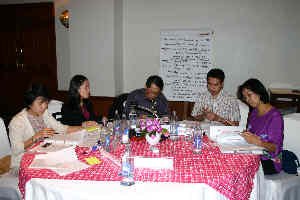Public Participation Guide: Tools for Consensus Building and Agreement Seeking
Tools for consensus building include techniques that you can use to bring diverse groups of stakeholders together to engage in shared learning and decision making. These tools are only applicable to the collaborate and empower levels of public participation.
Consensus building is a process and cannot be done quickly. In general, any consensus-building effort requires a consistent set of participants who work together over the duration of the process. It is important for the participants to work and learn together, developing the relationships essential to reaching agreement. This is not possible if participation is not stable. Consensus-building in low-trust situations will take even longer as participants must first develop the trust needed to work together constructively, which is a precursor to reaching agreement.
Consensus building requires that people meet face-to-face. While some activities can occur remotely at points during the process (especially through internet-based video, voice, and document sharing), initial relationship-building and key agreement seeking will require in-person meetings.
Many of the tools to inform and for generating and obtaining input can be used as components of a consensus building process to educate participants, generate dialogue, and identify common ground.
| Tool | # of Participants | Best Suited for |
|---|---|---|
| Consensus workshops | Up to hundreds | Smaller, less controversial decisions or identifying shared values |
| Advisory boards and similar groups | Small groups (25 or fewer) | Long-term and complex processes |
| Computer-assisted processes | Large | Decisions that can be well defined into small segments and do not require stakeholders to get to know each other |
| Citizen juries | Limited, generally around 12 | Decisions that can be organized into clear options |

When designing a consensus process, consider the following questions:
- Who needs to be included for the final consensus to be legitimate?
- How will you include a diverse group of stakeholders that are a part of the consensus building process and ensure that their voices are heard regardless of race, color, national origin, sexual orientation or income?
- Are all key interests willing and able to participate?
- Are there trust or other issues that must be addressed before the process can begin?
- What are the key decisions that must be made to achieve overall consensus?
- What information is necessary for all parties to understand in order to build a viable consensus?
- If the consensus process is not binding, to what degree are decision-makers willing and committed to considering the outcome of the consensus process?
(Additional resources on tools for consensus building and agreement seeking)
Explore the full Public Participation Guide.
Contacts
Shereen Kandil
U.S. Environmental Protection Agency
Office of International and Tribal Affairs (2650R)
1200 Pennsylvania Ave., NW
Washington, DC 20460
E-mail: kandil.shereen@epa.gov
